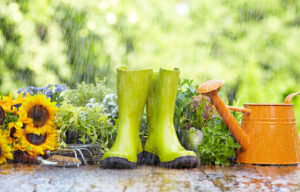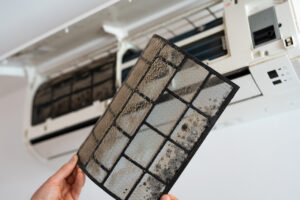 Because household mold is a living organism, it’s natural to think that, without the proper sustenance it needs, it will eventually die off on its own.
Because household mold is a living organism, it’s natural to think that, without the proper sustenance it needs, it will eventually die off on its own.
Oh, if it were only that easy.
Mold is the equivalent to Uncle Eddie from the National Lampoon’s Vacation movies but without the humor.
Let’s discuss why mold isn’t going anywhere unless it’s physically removed.
Household Mold Growth
One of the reasons mold grows so easily inside homes is because it’s not that picky.
It needs water, but when it comes to food, there’s an entire smorgasbord on its menu. Mold will munch on anything with cellulose, which happens to be in nearly everything you can think of—carpet, fabrics, curtains, wood, insulation, and more.
This is one of the reasons mold is so prevalent in basements. Not only do most basements have moisture, but it’s also the area where people store items they aren’t currently using such as old clothes, and rugs.
Household mold can even make its way into the tiny cracks and crevices into your walls and foundation. When it begins growing in those spots, it’s out of sight, and we typically don’t realize there’s a problem until after the colonies have spread.
Why Won’t Household Mold Die On its Own?
There are two different stages of mold. The viable stage is when mold is actively feeding and releasing spores into the air. This is also when, if you’re allergic to mold, you’ll begin to exhibit symptoms such as sneezing, coughing, itchy eyes, and headaches.
As the mold feeds and releases those spores into the air, you and your family subsequently inhale those spores into your airways. The spores can also get stuck in areas like the air ducts of your home and begin to grow and create more colonies.
If household mold doesn’t have access to a feeding source, it will go into the non-viable stage. You would think this is when the colonies would die off without access to food or moisture, but no. The colonies just go dormant.
If a mold colony is in the nonviable stage, think of it as hibernating. It isn’t actively releasing spores into the air, and it’s not growing because it doesn’t have any food or moisture.
It’s easy to think if the mold isn’t releasing any spores into the air, how harmful can it be, but the truth is, it doesn’t take much to push it into the viable stage once again. If it’s disturbed the spores can once again be released, and they can find other feeding sources within your home and start the process all over again.
Household Mold Removal
If you do find mold in your home, viable or nonviable, it needs to be removed. If it’s a smaller patch, less than 10 square feet in size, you can take care of the mold yourself with proper precautions. I give a more detailed explanation on DIY mold removal here.
If it’s a larger patch or if you can’t see the mold yourself, you’ll need to have a professional mold remediation team come in and take a look at your situation. At Mold Solutions, we have a certified team of mold inspectors that will help you assess the situation and come up with an individualized plan that works for you and your family. Give us a call or contact us today!







